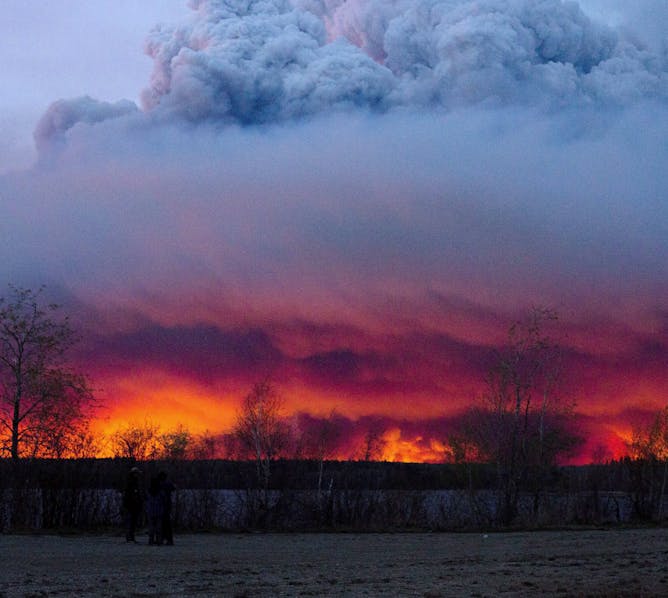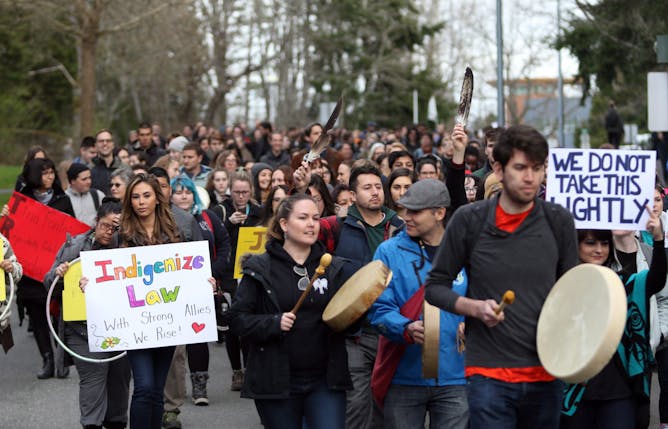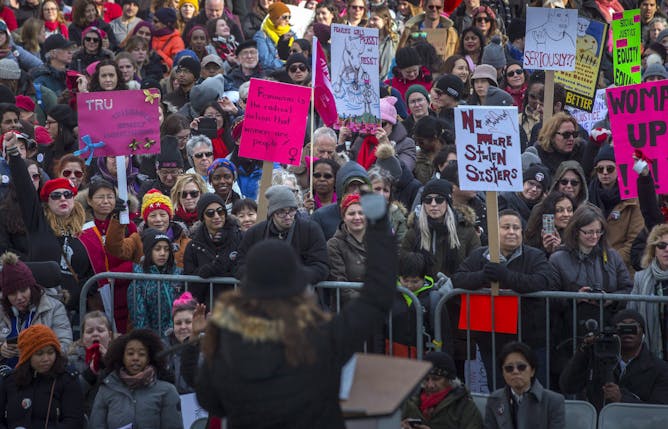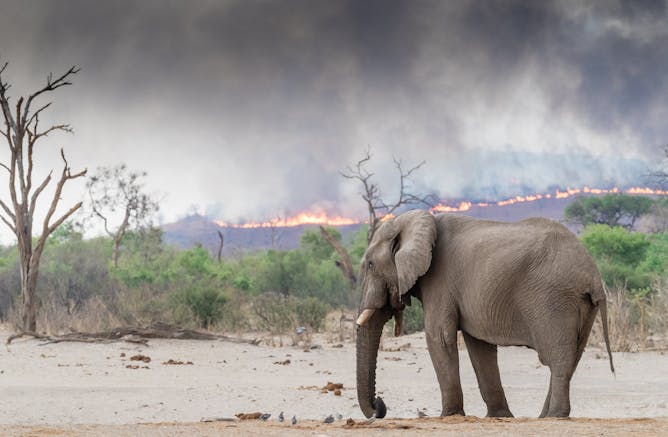|
|
|
Wildfires are transforming the boreal forest into a carbon emitter
|
|
The boreal forest has been removing carbon from the atmosphere and storing it in its soils for thousands of years, but parts of it have started releasing it back into the atmosphere. Today in The Conversation Canada, Jill Johnstone, from the University of Saskatchewan, Carissa Brown, from Memorial University and Xanthe Walker, from Northern Arizona University, describe how more frequent wildfires could have profound effects on both the boreal forest and the global climate.
We also look at the history of marginalization of Indigenous Peoples on university and college campuses, and how all Indigenous voices, including those of dissent, must have a platform where they can speak for themselves.
And finally, C. Nadine Wathen from Western University proposes a new way to think about gender-based violence, and how soon-to-be released data could add nuance to our understanding of the issue, help dispel myths and challenge hateful messages.
|
Hannah Hoag
Environment + Energy Editor
|

|
|
Top story
|

A wildfire mores towards the town of Anzac from Fort McMurray, Alta. in May 2016.
Jason Franson/The Canadian Press via AP
Jill Johnstone, University of Saskatchewan; Carissa Brown, Memorial University of Newfoundland; Xanthe Walker, Northern Arizona University
The boreal forest is being reshaped by wildfire. As climate change intensifies wildfire activity, the boreal forest will likely become a carbon source.
|

Students stage a walkout to raise awareness about systemic discrimination in the Canadian justice system during a protest at the University of Victoria in Victoria, B.C., on March 14, 2018.
THE CANADIAN PRESS/Chad Hipolito
Paul McKenzie-Jones, University of Lethbridge
As students and faculty start a new academic year, it's a good time to highlight the barriers to Indigenizing the campus and the importance of Indigenous voices on campus.
|

People listen to a speaker as they gather in Nathan Phillips Square, before embarking on a Women’s March in Toronto on Jan. 20, 2018.
THE CANADIAN PRESS/Chris Young
C. Nadine Wathen, Western University
New national data, on campuses and elsewhere, can help shift our shared narratives about the root causes of gender-based violence.
|
La Conversation Canada
|

La marche conjointe historique dans l’espace de deux femmes astronautes à l’extérieur de la Station spatiale n’a pas eu lieu parce que la station ne disposait pas de combinaisons spatiales adaptées aux deux femmes.
NASA
Malinda S. Smith, University of Alberta
Malgré les preuves des avantages de la diversité fondée sur le sexe, la race et d'autres facteurs au sein des équipes de recherche, les critiques sur les avantages des programmes d'équité persistent.
|

Un éléphant se met à l'abri des feux qui ravagent la savane. Oui il y a plus d'incendies en Afrique qu'au Brésil. Mais contrairement à l'Amazonie, la savane africaine a évolué pour repousser rapidement.
Shutterstock
Colin Beale, University of York
Oui, il y a plus d'incendies en Afrique qu'au Brésil. Mais contrairement à l'Amazonie, la savane africaine a évolué pour repousser rapidement.
|
Business + Economy
|
-
Lindsey Simon, University of Georgia
While critics accuse companies facing lots of lawsuits of using bankruptcy as a sort of 'get of jail free card,' the reality of the legal procedure is more complicated.
|
|
Politics
|
-
Celia Williamson, University of Toledo
Jeffrey Epstein may be the current face of sex trafficking, but buying and selling youth for sex is a common practice in the US.
|
|
Science + Technology
|
-
Ben Marwick, University of Washington; Erle C. Ellis, University of Maryland, Baltimore County; Lucas Stephens, Max Planck Institute for the Science of Human History; Nicole Boivin, Max Planck Institute for the Science of Human History
Hundreds of archaeologists provided on-the-ground data from across the globe, providing a new view of the long and varied history of people transforming Earth's environment.
|
|
| |
| |
| |
| |
| |
| |
|
|
|
|
|
|
|